Official serving Rules in Ping Pong
Ping Pong serving rules are the most crucial thing in the game. Everything in this world has rules. Especially sports are bound by rules. Ping pong is one of the most popular games in the USA and the UK.
Rather than that, it is a standard game over the world nowadays. So the game has many rules.
Among them, we are going to cover some essential rules that you must know to play the game. The most important issue in this game is serving.
So one should know the laws and regulations regarding the serving. So to help you out, we are going to cover the serving rules in this article. We might be thinking that it will be helpful for you.
Well if we look around the history of (ITTF) International Table Tennis Federation, it has changed the rules of service of the game many times.
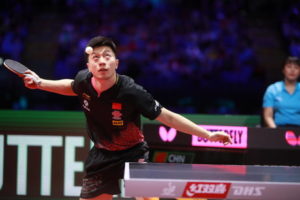
As the best players use their best serving techniques over the opponent and they take advantage of them all the time.
ITTF has concern over it, and they amended the rules to deduct the best players’ effectiveness as this is a continuous process said by the ping pong players.
In ping pong, the most effective stroke is the service, and most importantly, the game starts with the service.
During the playtime, when the server throws the ball into the vacuum for the service if the ball misses touching the paddle ultimately, the opponent will get the point.
Everyone talks about serving as the most complicated issue in the game of ping pong, which has been changed with the flow of time as ITTF always makes sure to run the best rules over time.
So go for a closer vision what are the most recent rules of the service.
You know everything about ping pong, but you do not have any equipment to play it. That would be disgusting.
If you love ping pong and you are passionate about it, you should check our reviews of the best ping pong tables as we did it very carefully and honestly based on the market and the factor it should maintain.
We hope you will not be disappointed after reading this article. Instead, you will love it, and we can guarantee that. Other reviews like paddles and balls are also available on our site.
You can go through it and hopefully you will be benefited. Who loves to play ping pong outdoor can also get the best outdoor ping pong tables reviews.
The Most Recent Law of Ping Pong or Table Tennis 2.6.1 tells:
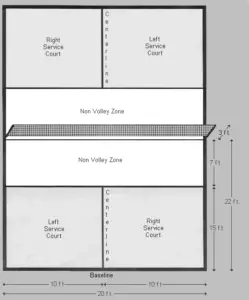
There are a lot of policies to hold the balls correctly. Now we are going to demonstrate all the way you have to perform as a ping pong professional. Though there are a lot of wrong moves as well, you have to learn the proper way.
- You are not allowed to use the top right procedure while the ball remains in your open hand, not in an open palm.
- You can hold the ball with the fingers, and that is called the bottom left procedure, and that is illegal.
- Though the palm is cupped and it is not open in the bottom right procedure, despite that this procedure is illegal. The ball cannot be free in the palm, but it is placed in the backward of the palm and through the fingers.
- Now come to the legal one, and that is the top left procedure. In this procedure, the ball remains free in the palm, and the finger remains straight, and the total thumb remains straight. So for that reason, this procedure is legal.
Ping pong serving rules are the essential things in the game. So you have no way to cheat on that. If you do so in front of the umpire, it will be called foul. One must keep the ball in his free hand and cannot throw the ball instantly into the air.
He must hold the ball onto his hand for a while, especially on the flat hand because he is not allowed to spin the ball while throwing the ball in the air if the umpire notices that he will call foul and your service will be canceled.
In the ping pong law of 2.6.2 demonstrates:
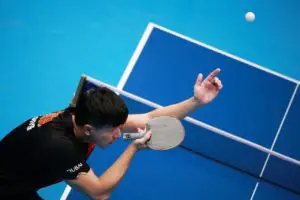
The primary thing that had been told in the 2.6.2 law is the player who is going to serve is to throw the ball upright, putting no spin on it.
And the height would be 16mm at least when the ball leaves the palm of his free hand. Then he has to maintain that he could not touch anything during fall from the height and touch the paddle.
This law is bound in with the 2.6.2 rule; actually, it demonstrates the ball should not spin when it is thrown in the air.
The basic thing you have to do is throw the ball at the height of 16mm when you free the ball from the palm of your free hand, and you have to do it a couple of times.
You must confirm that the ball reaches that much height in the air if you raise your hand that much and drop the ball from that position that is not allowed at all.
That is the reason the bottom-right procedure that we have talked about earlier is not legal. The reason for that is the ball does not raise 16mm in the air. You have to strike the ball at the right time when the ball fall from the distance it rose.
Though there are arguments over the vertical upright of the ball through the air, some players will argue regarding 45 degrees of the vertical position. They say it’s nearly vertical not precisely vertical.
The Ball Toss Law 2.6.3
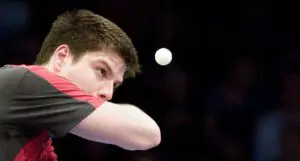
In this law, the ball should throw upward vertically without putting a spin on it and make sure it reaches at least 6.3 inches after releasing from your hand and come back lower without touching before it strikes.
When the server first hits the ball with his paddle, the ball has to land on his court first, and after passing the net successfully, it should touch the opponent’s court as well. So for a successful service ball has to place on both the court of the players.
Another important factor you need to know in this and the previous combined law is you must let the ball fall from the peak of its height.
If you hit the ball when it is rising, and the umpire can understand, he will call it a fault. It is challenging for the referee to notice that properly.
So what he does is for the first time he warns the server, and if he does it again, then he calls that foul. So in law, 2.6.3 tells this thing very clearly.
The umpire does not need to warn the player to call the fault. But he does that only because of giving a chance to the player. The referee is the all-in-one. So what he likes to do, he does it in the match. So the players should be aware of those issues.
Hitting the ball Over the Net law 2.6.3
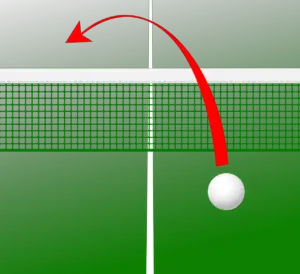
Law 2.6.3 states that during the fall of the ball from the height the server should hit it and it should make sure it touches his court first and after crossing the net set it should reach the receiver’s court.
For the double-player game, the ball should contact the right side court for both the server and the receiver.
The law demonstrates the server can serve from any corner of the net from his side. He needs to make sure the ball touches his court and the receiver’s court.
It can take the curve beside the net after passing the server’s court. The net is proposed to take 15.25cm out of the sideline.
There is no specific requirement to bounce the ball once. After crossing the net the ball can bounce more than once or once. The receiver should hit the ball before one bounce to continue the point. Otherwise, the server will get the point.
Serving in Double law 2.6.3
In this ping pong serving rule, the ball should touch the right side of each player court for both the server and the receiver. This portion is only for the double game. Whereas, all the other things that we have talked about above are for the single game.
So to be very clear about this one, the server should not cross the net during the service whereas he should serve it around from the net post. So for that one, there is no way for the argument.
Ball Location During The Service Law 2.6.4
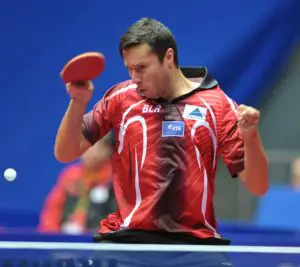
This law demonstrates the ball should be above the surface of the playing level, and the server should not hide the ball from the other players during the service.
It means from the beginning of the service until hitting the ball; the server hand cannot go under the table. The server has to keep his free hand holding the ball should be in the upright position.
Here nothing has been told about the player location both for the single and the double game keeping his paddle in hand.
For legal law, the player keeps his hand free and keeps his thumb over the playing surface of the table. The player can stand anywhere in front of the ping pong table.
Standing behind the end line for a player is legal in a ping pong game. But it would be illegal to cross the end line.
There is no specific law about the paddle of yours during the service where you should keep it. You can hold it even under the table as there is nothing said about it.
Hidden Ball Law 2.6.5
Quickly remove your free hand as soon as you leave the ball from your hand. Because the place gap in between net and ball is defined as the ball’s place after releasing the ball from hand.
To extend this law, you will get the legal thing about hiding the ball during the motion of service. The receiver can understand the ball location watching the servers serving action.
The most noticeable point about this law is to remove your hand as soon as you leave the ball from your hand to send it to the peak of the height. But in most cases, the players do the wrong thing about this.
As the umpire sits in the middle of the table, he cannot notice it a very little time.
It is quite severe for the umpire to say the service is legal or illegal from that position as we told about this earlier. So for the betterment of the game, and your personal experience, you should keep your free hand out of the area.
Most Common Serving Rules of Ping Pong
The most common serving rules of Pong pong involve the following:
- The ball must be served from behind the long line
- The player plays their service by tossing the ball high in the air and striking it to land on the table so that it bounces once on the opponent’s side and hits the front wall above the table.
- The 1st serve must be to your left side before you can serve any other shots during a point.
- If the 1st serve hits the front wall above the table, then on a second bounce on your side of the table it must hit on or below your short line.
- The ball cannot be served out of turn. This means that if a player serves first in a game and their opponent serves first in the next point, they have to wait for their opponent’s serve before they can make their first serve.
- A player cannot return a ball that has bounced more than once on their side of the table and then hit the front wall above the table, or which has bounced on their side of the table and then hit the floor, ceiling, or any object which is not part of the table.
If the ball is not legally served or returned, then a player can do any of the following:
- Receive serve from their opponent if they have been wronged. This may be from the previous point or from a later point during that match.
- Challenge an error in service by calling for a let and playing a new point.
- Accept that the player causing the error loses the point and plays on.
A Let is played if there are any of the following:
- The ball, before it has bounced twice on their own side of the table;
- Touches either player;
- Touches anything which is not part of the table, such as the ceiling or their opponent’s clothing;
- Touches the net, either player’s body or racket while over the net, and before hitting the front wall. A let can also be played if a player accidentally touches the ball with their foot, and it would have bounced outside of the playing area were it not for this error;
- Touches the net while overhanging on their opponent’s side of the table;
- If the ball breaks, but re-forms. The game continues if it can still bounce and hit the front wall without interference from any other source after having broken.
If a let has been played then play is started again with either player serving from where the let was played. If a let has been successful in being played.
For example, if the ball is not served legally, then a point is awarded to the opponent of the player who served illegally or incorrectly.
If a Let cannot be applied because play would continue without interference from any other source after having broken, then no let is played and the point is replayed.
If a Let cannot be applied because of interference from any other source after having broken, for example, if a player touches the ball after it has broken but before it hits the front wall then no let is played and that point is replayed.
A Game shall be won by a player who first scores 11 points unless both players or pairs score 10 points when the game shall be won by the first player or pair to score a two-point lead. For example: 12-10 , 14-12 etc.
If a set is tied at 9 all then the 1st player to win 2 points in their next turn wins that set.
Final Words About Ping Pong Serving Rules
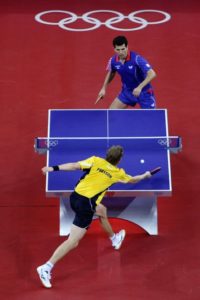
For every sport, starting is the most important thing, so for ping pong as well. If you cannot learn the rules of any game, you cannot be a professional player in that particular game.
Ping pong or table tennis is the most popular game in the world. So entering this game will be prestigious. And entering a well-established field without knowing the rules would be hilarious for you and the profession as well.
After knowing the basics about ping pong, it would be exciting and beneficial for your personal life.
How is that? Well, we have talked about that in our other article that is the health benefits of playing ping pong, and it will help you to know the best benefits of your health from a game.
Other than that, ping pong can allow you to spend quality time with your family and friends. So all those great things you are going to get from a single place. But first of all, you need to know the basic rules of it.

Hi, My name is Benjamin Fink and I am the author of the ping pong reviewed blog. I am a sports person learning and sharing my knowledge with others about ping pong and other sports.
I have been playing ping pong for the last 17 years and teaching people about the game and writing new things about the game through this blog When finding something new. I have participated in serious ping pong tournaments in my country.

1 thought on “7 Official Ping Pong Serving Rules: How to Serve Legally”
Comments are closed.